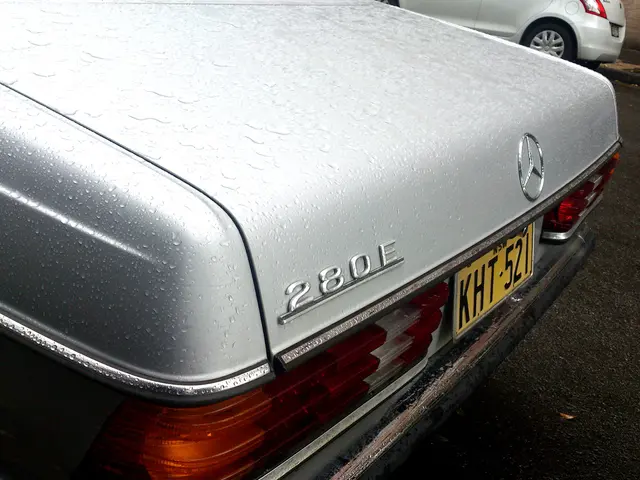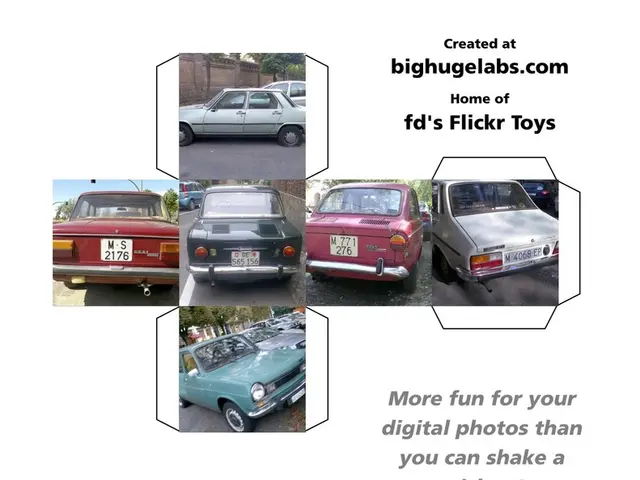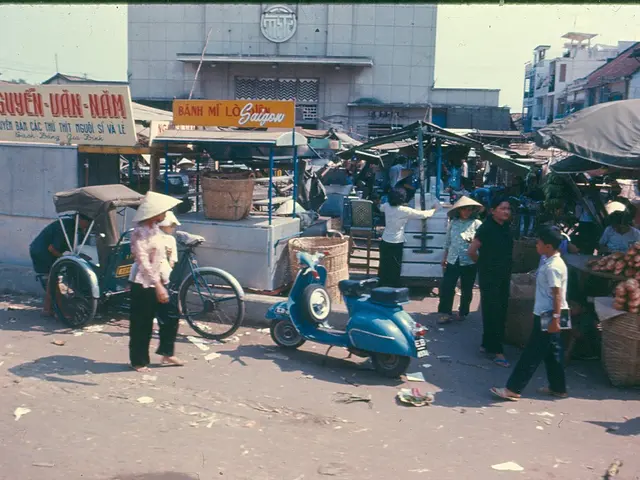Middle Lane Parking on Buersche Strasse: Overpriced Convenience?
Gladbeck, Germany: Addressing the Persistent Traffic Dilemma on Buer Street Bridge
The traffic conundrum on Buer Street in Gladbeck persists, with the recent compromise proposal from the city administration for the design of Buer Street Bridge sparking debate. The Gladbeck CDU has put forth a new proposal aiming to address the issue more cost-effectively.
Mayor Bettina Weist had suggested parking on the green median strip and redesigning the roadside for cyclists in mid-April. However, the Gladbeck CDU disagrees with this plan, advocating for a more economical and speedy solution.
The Gladbeck Christian Democrats' Proposal
On June 5th, the committee for urban planning, environment, climate protection, and mobility will deliberate on the conflict. In anticipation, the CDU wants to set forth the merits of their proposal.
The CDU proposes transforming the bridge's sidewalks to accommodate cyclists on both sides, with the necessary signage ensuring safety. Two options for signs are proposed: TS 240 (Shared Pedestrian and Bicycle Lane) or TS 239 (Pedestrian) with the addition of a "Bicycle traffic allowed" sign.
Gladbeck CDU on the Two Possible Signs on Buer Street Bridge
The first sign, TS 240, indicates a shared pedestrian and bicycle lane. According to the CDU, pedestrians can utilize the entire width of the sidewalk, relying on cyclists to signal their presence in a timely manner. In contrast, pedestrians do not have to continually look for approaching cyclists, as they do not have priority.
The second variant, the CDU suggests, allows cyclists to opt for the sidewalk instead of the road. Cyclists are required to proceed slowly and carefully if they choose the sidewalk option.
This proposal, while previously deemed impractical by city planners due to narrow sidewalks, may not apply to the CDU. According to CDU councilor Robert Ernst, there are examples of traffic management functioning similarly, such as on the Europabrücke in Gladbeck and a specific street in Gelsenkirchen. Ernst argues that deviating from the guidelines and recommendations can be justified when the specified minimum width is met. In the specified section, the sidewalk is almost constantly 3.20 meters wide, exceeding the minimum width requirement taking into account minimum distance widths.
The estimated 400 bicycles per 24 hours, as outlined in the current study by the Institute for Mobility and Urban Planning (Imobis), and the pedestrian frequency in this area significantly below 100, suggest that the usage-dependent threshold for shared guidance of pedestrian and bicycle traffic will not be reached, according to the CDU.
Agreement with the Administration's Concerns about Parking on the Median Strip
Besides the substantial costs associated with the construction of parking spaces on the median strip of the bridge, the CDU also addresses other concerns against the compromise proposal of the mayor. More details regarding these concerns will be discussed during the committee meeting on June 5th.
In the meantime, residents and interested parties are encouraged to sign up for the Gladbeck Newsletter for updates on the latest developments in the city.
The Gladdeck CDU proposes a cost-effective solution to address the traffic conundrum on Buer Street Bridge by transforming the bridge's sidewalks to accommodate cyclists on both sides, using either TS 240 (Shared Pedestrian and Bicycle Lane) or TS 239 (Pedestrian) signs, with the addition of a "Bicycle traffic allowed" sign. They argue that this solution, though previously deemed impractical, may be feasible due to narrow sidewalks, as there are examples of similar traffic management, such as on the Europabrücke in Gladdeck and a specific street in Gelsenkirchen.
The CDU also agrees with the administration's concerns about parking on the median strip of the bridge, acknowledging the substantial costs associated with the construction and addressing other concerns to be discussed during the committee meeting on June 5th.








